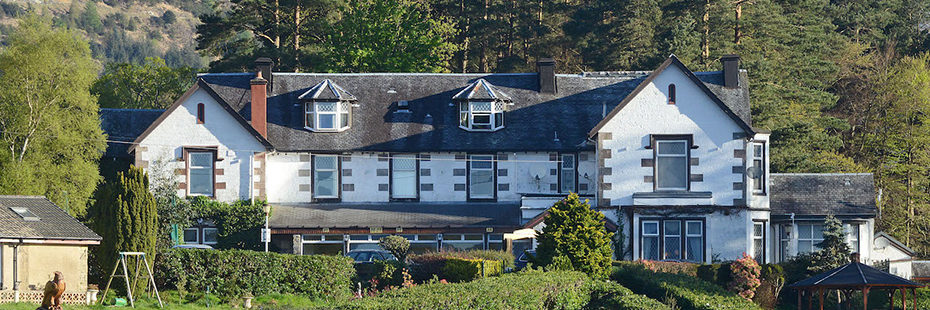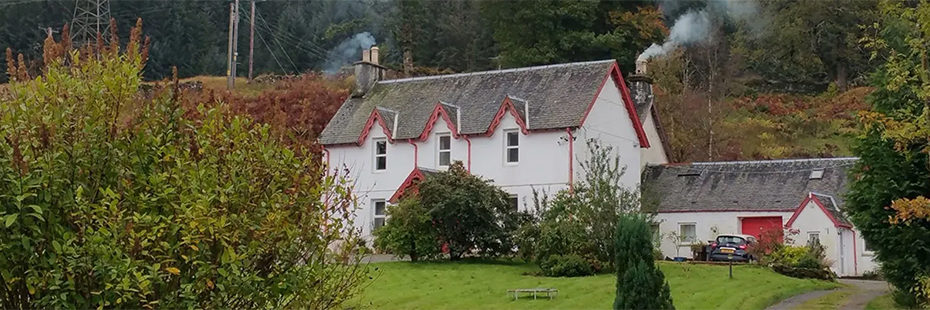Improving your energy use
Using less energy to run your business doesn’t just reduce your environmental impact and help you satisfy the requirements of increasingly environmentally conscious customers, it can also save you a packet on your energy bills.
Contents
2. Energy audit
3. Case studies
1. Energy efficency
Key areas to consider when assessing the efficiency of your energy use are heating, electricity and staff and consumer engagement.
Effective Heating
Effective heating is vital for your business to maintain comfort levels, especially with Scotland’s climate, and for many businesses heating is their largest energy cost.
- Adjusting heating controls can have a real impact on your heating costs. For example lowering your thermostat by just 1°C could save a staggering 10% on your business’s heating bill – and employees and customers probably won’t even notice the difference.
- Buildings can store heat for a long time after the heating system is switched off, yet many businesses wait until the close of business each day to turn off the heating. Use your timer to switch off your heating earlier, and to match settings to your operating hours.
- Heating store cupboards and seldom-used areas can be an unnecessary cost that can be tackled by adjusting thermostatic radiator valves.
- When heating and cooling controls are not set correctly, they can start to fight against each other. Get smart with your controls, try setting your heating to turn off above 21°C and cooling to turn off below 24°C (a dead band of 3°C) and see how much you can save.
Lighting
Lighting can account for up to 20% of all energy used in many commercial and public buildings. If you operate evening shifts, like many retail operators, or have late operating hours as seen in the hospitality and tourism sector, this can mean an even higher lighting spend to accommodate the longer operating hours.
- One of the first things to check is the type of lighting you have. If you are using older lighting variants, such as halogen or incandescent, for example, you will be paying significantly more than if you switched to LED.
- The least expensive light is the one that is switched off. So, it’s worth checking that your light switches are clearly labelled so staff can turn off lights when they are not needed.
- Always try to make the most use of natural light. Ensure that your windows and skylights are clean to allow as much light through as possible. And check to see if any furniture or other obstructions are blocking natural light from entering.
- Make sure blinds and curtains are mounted above or to the side of windows, so they are not obstructing light when not in use. Arrange workspaces close to windows to allow staff to benefit from natural light – rather than reaching for the light switch.
- Automating lighting controls is another low-cost way to minimise unnecessary lighting. A variety of options exist for automating lighting – presence detection, for instance, is ideal for intermittently occupied areas such as toilets, storerooms, meeting rooms and communication areas.
- Daylight control systems can also be used to maximise natural light use. Photocells are used to detect when there is enough daylight and to switch off artificial light accordingly. Some systems can dim lights and supplement natural lighting where necessary.
- Using timers is another way to automate your lighting to match it to your needs and avoid energy being wasted when lighting isn’t needed.
Engaging Your Staff and Customers
Engaging your staff and customers can be a great way save on your bills, and also demonstrates your organisation’s commitment to the environment.
- Getting your senior management on board is always helpful and can done by not only highlighting the benefit of reduced energy costs, but also the positive PR.
- Showcase any successes to date with your colleagues. If you can demonstrate savings made already then share these, explain how they were made and highlight the further areas that can be targeted for reducing costs.
- Setting up a Green Team of engaged colleagues can create real change within your organisation with a dedicated task force to channel ideas and energy.
- Where inefficient behaviours are identified in the workplace, good communication and direction can be key to resolving them. Carefully placed reminders such as posters, stickers or screen savers can serve as powerful prompts to remind staff to save energy. You’ll find free posters and stickers on the Zero Waste Scotland. You’ll also find a range of other resources that will help you to engage your senior managers and set up a Green Team.
If you are a small or medium-sized enterprise, Zero Waste Scotland’s Energy Efficiency Business Support Service has a team of specialist consultants that can visit your site and undertake a free energy assessment. They’ll provide you with a detailed report highlighting the best actions you can take to save energy, money and carbon. They also provide access to interest free loans to help you undertake energy savings projects, email: energyefficiency@zerowastescotland.org.uk
2. Energy Audit
Although we might take it for granted, energy is critical to the success of our small and medium sized enterprises (SMEs) in Scotland. It enables us to operate effectively, to power our IT equipment, to light up our premises, and to heat our buildings for guests and staff. Because energy is so critical, it is often seen as a necessary cost of business and therefore, energy management is often neglected. However, leading SMEs have already realised the immediate benefits that energy efficiency offers, while also preparing to face rising energy prices, increasing climate change and the growing market demand for environmentally responsible suppliers.
To realise cost savings, the first step is to identify and prioritise your organisation’s energy saving opportunities through an energy audit to identify all your energy saving opportunities across the organisation, prioritise the opportunities, and where necessary, secure the support and funding needed to make them happen:
- The process starts by assessing your current energy use. Understanding where and how energy is used in your organisation will help to guide your audit to areas of highest importance. A free Energy Usage Tracking Spreadsheet is available to download from Zero Waste Scotland.
- Then conduct a structured and systematic site walk round. The site walk round is where you can identify opportunities for energy savings across your site and, in particular, any areas of high importance. Download an Energy Audit Checklist.
- Review and prioritise all your opportunities and develop an action plan.
- As it is unlikely that you will be able to do everything on your action plan without some kind of financial support you would then prepare a business case for your chosen projects that will require support.
A full energy audit guide provides advice and support for organisations in Loch Lomond & The Trossachs National Park.
Carrying out an energy audit should not be viewed as a one off event. The best way to continually improve your organisation’s performance and reduce energy costs is to carry out audits at regular intervals.
Zero Waste Scotland’s free guide contains great advice and guidance on how you can conduct an energy audit for your business, it provides step by step instructions and signposts to lots of useful resources along the way.
3. Case Studies
Ardlui Hotel

Ardlui Hotel
Brothers Scott and Glenn Squires are happy with the decision they made seven years ago to make their business more energy efficient, especially now they have paid off their loan and are enjoying the benefits of the savings.
The pair look after the day-to-day running of the family’s Ardlui Hotel, Marina & Holiday Home Park that sits on the northern shores of Loch Lomond.
The property was built in the early 19th century as the hunting residence of the Colquhoun family before opening as a hotel in 1886. The main building has been extended over the years with east and west wings added at the turn of the 20th century.
The Squires family took ownership of the Ardlui in 1978 with the brothers the third generation to run it. As well as the hotel, they also own an adjoining caravan park, marina and self-catering lodges.
In 2013, they approached Zero Waste Scotland for independent advice on making their business more energy efficient. At the time, electricity was being used for kitchen equipment, lighting, extraction fans, heating pumps, campsite pitches and the effluent treatment plant. LPG fuelled the central heating boiler, campsite tumbler drier, campsite hot water and additional kitchen equipment.
Their annual energy bills were more than £60,000 with carbon emissions reaching almost 300 tonnes.
The report they received had several recommendations, including installing a biomass boiler, insulating loft space, metering electricity for all caravans, optimising voltage on some appliances and introducing an energy management policy. The cost for all changes was estimated at £107,000.
But the projected savings were just under £40,000 and it was estimated that the carbon output would be brought down by 113 tonnes each year, a 39% improvement.
With a payback period of just over four years, and the benefit of a Scottish Government interest-free SME Loan, it was a no-brainer for the two brothers who implemented all the suggested changes, as well as continuing their programme of switching all lighting to LEDs.
Scott said: “It has been one of the best things we have done. It’s all paid for now which is great. It has made a big difference to the business.
“A big thank you to Zero Waste Scotland’s Energy Efficiency Business Support Service. Their help was invaluable and we wouldn’t have been able to do it without them.”
Inverardran Guest House

Inverardran Guest House
The family-run Inverardran Guest House sits in the north of the Loch Lomond and Trossachs National Park in Crianlarich, the gateway to the Scottish Highlands.
John and Janice Christie are the proud owners of the seven-bedroom B&B and the separate two-bedroom holiday cottage next door.
In 2018 they approached Zero Waste Scotland for help in making the properties more energy efficient. At the time, heating in the main house comprised two coal-fired stoves connected to the central heating, while the cottage was heated with two storage heaters and two panel heaters.
Their annual heating bill was £6,700 with more than 40 tonnes of carbon emissions.
The couple were keen to switch to a biomass boiler that would not only save them money, but would be a carbon neutral alternative.
It was estimated that the heating bills could be cut by around £2,700 with their carbon emissions reduced by 26.7 tonnes a year.
The couple made the £35k investment with the help of a Scottish Government SME Loan, which gave them a payback period of seven years, and it has been money well spent.
John said: “The bills have been cut and the house has never been warmer.”

